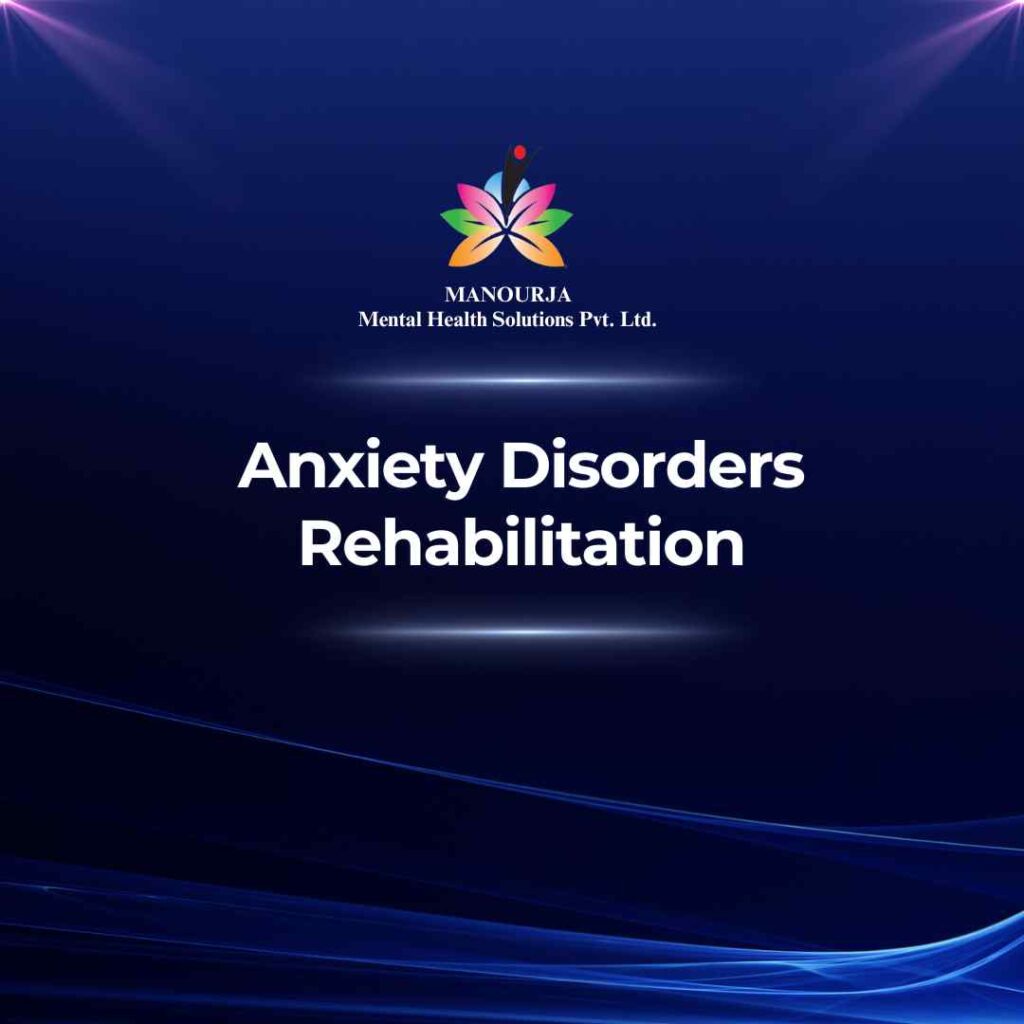Anxiety Disorders Rehabilitation

Anxiety disorders, characterized by excessive fear or worry, can significantly disrupt daily life. Understanding the signs and symptoms, as well as the appropriate settings for treatment—whether outpatient (OPD) or inpatient (IPD) psychosocial rehabilitation—is crucial for those affected and their families. Here’s a comprehensive guide to addressing anxiety disorders through effective rehabilitation strategies.
Signs and Symptoms of Anxiety Disorders
For individuals and families, being alert to the following symptoms can help determine when professional help is needed:
- Excessive Worrying: Disproportionate worry about everyday matters, which is difficult to control.
- Restlessness: A feeling of being on edge or unable to relax.
- Fatigue: Often follows prolonged periods of anxiety.
- Difficulty Concentrating: Anxiety can interfere with focus and clarity of thought.
- Irritability: More pronounced than typical fluctuations in mood.
- Sleep Disturbance: Trouble falling or staying asleep, which is not related to other health issues.
- Muscle Tension: Persistent tension in muscles, not linked to physical activity.
- Panic Attacks: Sudden episodes of intense fear or discomfort, peaking within minutes.
Choosing Between OPD and IPD for Anxiety Disorders
When deciding between outpatient and inpatient settings for treating anxiety, consider the following factors:
- Severity of Symptoms: IPD may be necessary if the symptoms are severe enough to significantly impair daily functioning or if there is a risk of harm to oneself.
- Effectiveness of Outpatient Treatments: If symptoms are manageable and the individual has responded well to less intensive treatments, OPD may be appropriate.
- Support Systems: The presence of strong family or community support can make outpatient treatment more feasible.
- Comorbid Conditions: IPD may be indicated if there are other psychiatric or medical issues that complicate the anxiety disorder.
The Role of Psycho-social Rehabilitation
Psycho-social rehabilitation for anxiety disorders focuses on restoring normal functioning by:
- Building Coping Skills: Training individuals in techniques to manage and reduce anxiety.
- Enhancing Social Skills: Reducing avoidance behaviors and increasing confidence in social situations.
- Vocational Support: Helping individuals gain or regain employment skills and workplace adaptability.
Techniques and Approaches Used at MANOURJA
MANOURJA utilizes a variety of evidence-based methods to support individuals with anxiety disorders:
- Cognitive Behavioral Therapy (CBT): Helps modify negative thoughts that contribute to anxiety.
- Exposure Therapy: Gradually and repeatedly exposes the patient to the source of their anxiety in a controlled environment to diminish sensitivity.
- Mindfulness and Relaxation Techniques: Teaches methods such as meditation, controlled breathing, and progressive muscle relaxation.
- Group Therapy: Provides peer support and helps individuals realize they are not alone in their experiences.
Steps in the Rehabilitation Process at MANOURJA
- Initial Assessment: Detailed evaluation of the individual’s symptoms, needs, and circumstances.
- Plan Development: Creating a personalized treatment plan that includes specific goals and interventions.
- Implementation: Engaging the individual with scheduled therapy sessions, group activities, and skills workshops.
- Monitoring Progress: Regular reviews to adjust the treatment plan based on the individual’s progress.
- Long-term Support: Ensuring ongoing support and adjustment of strategies to maintain gains and prevent relapse.
Effective treatment and psychosocial rehabilitation can significantly improve the quality of life for individuals with anxiety disorders, helping them to return to a more normal and functional lifestyle. The comprehensive approach at MANOURJA provides the tools and support necessary for recovery and long-term management of anxiety.
“Every step forward is a step away from anxiety, towards a life of peace and fulfillment.”
